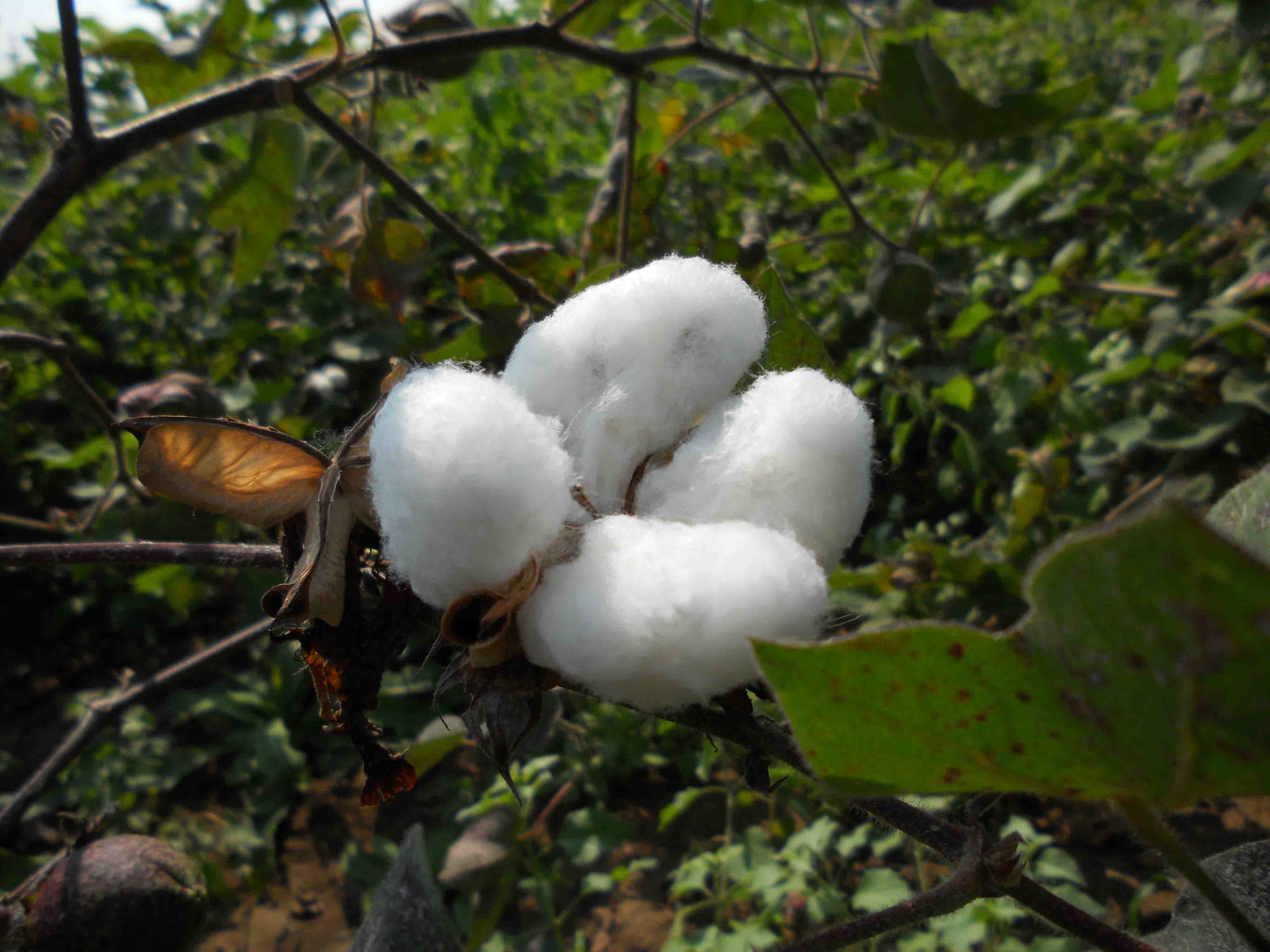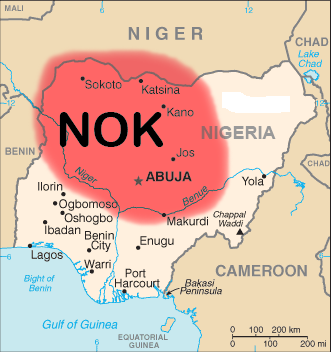|
Northern Nigeria Marketing Board
The Northern Nigeria Marketing Board was a statutory commodity board authorized to fix producer prices of export commodities within the Northern region of Nigeria. It was also responsible for licensing buying agents and the purchasing export commodities in the region. The board was previously named the Northern Region Marketing Board, a regional board that had earlier superseded the national and commodity specific Nigerian Groundnut Marketing Board after constitutional restructuring in 1954. The major revenue earner for the board was groundnut and the Northern region was one of the world's major exporter of the produce post-World War II and up to the early 1970s. Purchases by the board increased from 178,000 tonnes in the 1949/1950 buying season to 787,000 tonnes in the 1963/1964 season. In the 1960s, excess funds of the board was contributed funds to the development of Ahmadu Bello University, Hamdala Hotel, Kaduna, Kaduna Textiles, and Bank of the North. The board is now defun ... [...More Info...] [...Related Items...] OR: [Wikipedia] [Google] [Baidu] |
Marketing Board
A marketing board is an organization created by many producers to try to market their product and increase consumption and thus prices. It can also be defined as an organization set up by a government to regulate the buying and selling of a certain commodity within a specified area. They most commonly exist to help sell farm products such as milk, egg (food), eggs, beef or tripe and are funded by the farmers or processors of those crops or products. Marketing boards often also receive funding from governments as an agricultural subsidy. The leadership and strategies of the marketing boards are set through votes by the farmers who are members of the board. Marketing boards also sometimes act as a Pooling (resource management), pool, controlling the price of farm products by forming a legal cartel. They also fund other ventures beneficial to their members such as research. Marketing boards differ from industry trade groups in that their primary goal is marketing towards consumers, ... [...More Info...] [...Related Items...] OR: [Wikipedia] [Google] [Baidu] |
Cash Crop
A cash crop, also called profit crop, is an Agriculture, agricultural crop which is grown to sell for profit. It is typically purchased by parties separate from a farm. The term is used to differentiate a marketed crop from a staple crop ("subsistence crop") in subsistence agriculture, which is one fed to the producer's own livestock or grown as food for the producer's family. In earlier times, cash crops were usually only a small (but vital) part of a farm's total yield, while today, especially in Developed country, developed countries and among Smallholding, smallholders almost all crops are mainly grown for revenue. In the Least developed country, least developed countries, cash crops are usually crops which attract demand in more developed nations, and hence have some export value. Prices for major cash crops are set in international trade markets with global markets, global scope, with some local variation (termed as "basis") based on Cargo, freight costs and local supply a ... [...More Info...] [...Related Items...] OR: [Wikipedia] [Google] [Baidu] |
Northern Region, Nigeria
Northern Nigeria (or Arewancin Nijeriya) was an autonomous division within Nigeria, distinctly different from the southern part of the country, with independent customs, foreign relations and security structures. In 1962, it acquired the territory of the British Northern Cameroons, which voted to become a province within Northern Nigeria. In 1967, Northern Nigeria was divided into the North-Eastern State, North-Western State, Kano State, Kaduna State, Kwara State, and the Benue-Plateau State, each with its own Governor. History Prehistory The Nok culture, an ancient culture dominated most of what is now Northern Nigeria in prehistoric times, its legacy in the form of terracotta statues and megaliths have been discovered in Sokoto, Kano, Birinin Kudu, Nok and Zaria. The Kwatarkwashi culture, a variant of the Nok culture centred mostly around Zamfara in Sokoto Province is thought by some to be the same or an offshoot of the Nok. The Fourteen Kingdoms The Fourteen ... [...More Info...] [...Related Items...] OR: [Wikipedia] [Google] [Baidu] |
Macrotyloma Geocarpum
''Macrotyloma geocarpum'' is also known as the ground bean, geocarpa groundnut, Hausa groundnut, or Kersting's groundnut. In French, it is often called ''la lentille de terre''. ''M. geocarpum'' is an herbaceous annual plant and a crop of minor economic importance in sub-Saharan Africa, tolerant of drought, with a growth habit similar to that of the peanut. ''M. geocarpum'' is a pulse belonging to the legume family. It is primarily produced in western Africa, specifically in Benin and surrounding regions. It can provide nutrition, income, and the ability to alleviate hunger given the further production and enhancement of current practices. Yields reach in dry seed.Plant resources of tropical Africa. Cereals and pulses. Plant resources of tropical Africa (PROTA). Backhuys Publishers. Eds. Brink, Grubben, etc. 2006. p. 100. Cites Leung, Busson & Jardin 1968. Early 20th century, West Africa Following the construction of the Nigerian railway system, which extended from Lagos ... [...More Info...] [...Related Items...] OR: [Wikipedia] [Google] [Baidu] |
Ahmadu Bello University
The Ahmadu Bello University (ABU) is a public research university located in Zaria, Nigeria, Zaria, Kaduna State, Nigeria. It was opened in 1962 as the University of Northern Nigeria. The university has four colleges, three schools, 18 faculties, 110 academic departments, 17 centres, and seven institutes with over 600 professors, about 3000 academic staff and over 7000 non-teaching staff. The university has over 400 postgraduate programmes reflecting its strife to become a postgraduate studies-centred university. The university operates from two campuses in the ancient Cosmopolitanism, cosmopolitan city of Zaria, the Samaru Campus where the Senate Building and most of the faculties are located and the Kongo Campus, hosting the faculties of Law and Administration. It has been adjudged to be the largest university in Sub-Saharan Africa, (next to Cairo University) in terms of land occupied, owing to the numerous buildings it has. On 5 February 2025 the Governing Council of Ahmadu Bell ... [...More Info...] [...Related Items...] OR: [Wikipedia] [Google] [Baidu] |
Sesamum Radiatum
''Sesamum radiatum'' is a species of flowering plant in the Pedaliaceae. It is in the same genus as sesame, and is known by the English common names benniseed, black benniseed, black sesame, and vegetable sesame. (While the regular sesame, ''Sesamum indicum'', may have black seeds, also referred to as black sesame, and is a related plant, it is a separate species from ''Sesamum radiatum''.) It is native to west and central Africa, has been cultivated since ancient times in Africa, and is sometimes also used in tropical Asia where it has become naturalized to a small extent. Etymology Benniseed is a portmanteau of both the word ''benne'' and ''seed''. Benne, meaning sesame derives from Gullah ''benne'' which is akin to Malinke ''bĕne''. Use Culinary The seeds are eaten whole, made into a paste, ground into a powder, or pressed for a high-quality oil. The leaves can be eaten fresh or cooked and are used in Sub-Saharan Africa as a leaf vegetable. The leaves are mucilaginous ... [...More Info...] [...Related Items...] OR: [Wikipedia] [Google] [Baidu] |
Elaeis
''Elaeis'' () is a genus of palms, called oil palms, containing two species, native to Africa and the Americas. They are used in commercial agriculture in the production of palm oil. Description Mature palms are single-stemmed, and can grow well over tall. The leaves are pinnate, and reach between long. The flowers are produced in dense clusters; each individual flower is small, with three sepals and three petals. The palm fruit is reddish, about the size of a large plum, and grows in large bunches. Each fruit is made up of an oily, fleshy outer layer (the pericarp), with a single seed (the palm kernel), also rich in oil. Species The two species, '' E. guineensis'' (Africa) and '' E. oleifera'' (Americas) can produce fertile hybrids. The genome of ''E. guineensis'' has been sequenced, which has important implications for breeding improved strains of the crop plants. Distribution and habitat ''E. guineensis'' is native to west and southwest Africa, occurring ... [...More Info...] [...Related Items...] OR: [Wikipedia] [Google] [Baidu] |
Sahel Drought
The Sahel region of Africa has long experienced a series of historic droughts, dating back to at least the 17th century. The Sahel region is a climate zone sandwiched between the Sudanian Savanna to the south and the Sahara desert to the north, across West and Central Africa. While the frequency of drought in the region is thought to have increased from the end of the 19th century, three long droughts have had dramatic environmental and societal effects upon the Sahel nations. Famine followed severe droughts in the 1910s, the 1940s, and the 1960s, 1970s and 1980s, although a partial recovery occurred from 1975-80. The most recent drought occurred in 2012. While at least one particularly severe drought has been confirmed each century since the 17th century, the frequency and severity of recent Sahelian droughts stands out. Famine and dislocation on a massive scale—from 1968 to 1974 and again in the early and mid-1980s—was blamed on two spikes in the severity of the 1960-1980 ... [...More Info...] [...Related Items...] OR: [Wikipedia] [Google] [Baidu] |



